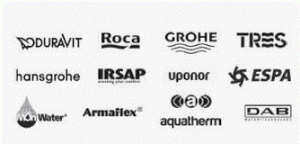44/21 Line of EventsAfter hearing strange noises…
Keep in mind that COGS doesn’t include indirect expenses (also called ‘overhead’ ‘operating costs’ or ‘operating expenses’). These operating expenses include things like salaries for lawyers, accountants, management, administrative expenses, utilities, insurance, and interest. Net loss or net income is a key indicator used to evaluate the company operating results in a specific period. Investors look at the size of the net loss and trends from previous periods to assess the company’s performance. The expenses in the income statement are all the costs the company incurred to provide the services or to produce the goods it is going to sell.
At Bench, we do your bookkeeping and generate monthly financial statements for you. An up-to-date income statement is just one of the financial reports small business owners gain access to through Bench. Gross income, operating income, and net income are the three most popular ways to measure the profitability of a company, and they’re all related too. The matching principle states that to calculate the net income/loss, all the expenses and related revenues be recorded in the same period. For a company to be profitable, all its expenses must be lower than its revenues.
Is a net loss the same as a negative profit?
Berkeley Lab is a multiprogram national laboratory, managed by the University of California for the U.S. This article was amended after publication to clarify that Germany intends to introduce a net-negative target, but has not yet committed to this. It was also clarified that the EU has a legal commitment to reach negative emissions after 2050. Prof David Reiner, a researcher of climate policy at the University of Cambridge, was part of a research effort to work out how the responsibility for CO2 removal could be shared equally between countries. At COP28 in Dubai in 2023, Panama also joined the Group of Negative Emitters, a small alliance of countries that are or are aiming to be net-negative led by Denmark (more on this below). Whatever the outcome 30 years from now, it will have taken a whole system approach to get there – with different aspects of our energy industry contributing in different ways to meet Britain’s 2050 target.
- Many of its scenarios for keeping temperatures well below 2°C by 2100 do rely on the world reaching net-negative greenhouse gas emissions in the second half of this century.
- Though the vast majority of countries are not close to being net-zero – let alone net-negative – there are a small number of global south countries that already remove more CO2 from the atmosphere than they emit each year.
- The scenarios were generated using new energy models complete with details of both energy consumption and production – such as the entire U.S. building stock, vehicle fleet, power plants, and more – for 16 geographic regions in the U.S.
Importance of Net Income/Net Loss
But somewhere around 10% of public companies go through that worst case scenario of the ultimate failure of bankruptcy. Though it is a sort-of spilled milk situation, investors have to live with the fact that a management that has squandered your money in the past is probably likely to do it again. So when times are good they might have higher COGs, but the total higher volumes make for higher Gross Profits. When times slow down they might have lower COGs, still creating lower Gross Profits due to less volume but not contributing huge losses in Gross Profit which would spill down to losses for Net Income.
Calculating net income with a formula
In the third scenario, LD, a low demand for energy coupled with a rapid fossil fuel phaseout sees net greenhouse gas emissions drop to near – but not below – zero, limiting warming to below 1.5°C without the world becoming net-negative. In the first scenario, “Neg”, temperatures are highly likely to overshoot 1.5°C this century before returning to this level of warming by 2100. The charts below, adapted from the IPCC’s report on how to tackle climate change, illustrate how global greenhouse gas emissions change under various scenarios where temperatures are kept to 1.5°C or well below 2°C by 2100.
Tropical forests are particularly carbon dense, storing a quarter of all the world’s land carbon. There are currently no technologies available to eliminate these emissions completely – and it is unrealistic to expect rice production to cease entirely in the future. Andrew has always believed that average investors have so much potential to build wealth, through the power of patience, a long-term mindset, and compound interest. Not to say that the past will predict the future, but to give a base rate of, in this case— how frequently companies get negative earnings in the stock market.
Net Zero Emissions
Net income is your company’s total profits after deducting all business expenses. Some people refer to net income as net earnings, net profit, or simply your “bottom line” (nicknamed from its location at the bottom of the income statement). It’s the amount of money you have left to pay shareholders, invest in new projects or equipment, pay off debts, or save for future use.
According to the study, with higher levels of carbon capture, biofuels, and electric fuels, the U.S. energy and industrial system could be “net negative” to the tune of 500 million metric tons of CO2 removed from the atmosphere each year. Business owners need to create an income statement, which is one of the three main financial statements. Also called a ‘profit and loss statement,’ or ‘p&l,’ the point of a company’s income statement is to show how you arrived at your net income.
In its latest assessment of how the world can tackle climate change, the IPCC presents a range of scenarios for how the world can meet its temperature goals by the end of the century. According to the climate not-for-profit Carbon Gap, Finland’s 2035 and 2040 goals represent the most ambitious legally-binding CO2 removal targets of any country globally. We’re still 30 years from the UK government’s target to bring all greenhouse gas emissions to net zero, so you’d be forgiven for wondering why interest is growing in achieving net negative carbon footprints. Companies with more variable expenses can usually cut their expenses easily, making negative net income less of a probability (since they can simply cut those variable expenses when revenues are lower). Under the Paris Agreement adopted by nearly every country in the world in 2015, it is officially recognised that developed nations should “take the lead” with slashing their emissions. In its latest assessment of how the world can tackle climate change, the IPCC presents a range of scenarios for how the world can meet its temperature goals by the end of the century.
As a result, the state treasurer anticipates a decrease of $99 million in revenue from the state’s principal business taxes. This prompts state officials to cut the current and upcoming fiscal year revenue projections by a significant amount and, unless they can cut expenditures as well, they will be operating at a net loss. The 2021 Europe Climate Law commits the bloc to achieving “negative emissions” after 2050.
Finland announced targets to reach net-zero greenhouse gas emissions by 2035, and net-negative greenhouse gas emissions by 2040. Because of this, a national target to reach net-negative greenhouse gas emissions can always be interpreted as “significantly more ambitious” than a net-negative CO2 target over the same timescale, he adds. According to the Intergovernmental Panel on Climate Change (IPCC), “net-negative emissions” is achieved when human-caused greenhouse gas removals exceed human-caused greenhouse gas emissions. Some experts have also called on developed countries to aim to reach net-negative emissions earlier on this century, arguing they have a moral responsibility to reduce climate change and to create space for other countries to emit as they develop. But if the company sells a valuable piece of machinery, the gain from that sale will be included in the california taxes are among the highest in the nation company’s net income. That gain might make it appear that the company is doing well, when in fact, they’re struggling to stay afloat.
I think it’s important to understand that most investors tend to overlook negative net income as any sort of signal at all, especially because there can always be underlying reasons behind them in each of the three situations above. What’s maybe less clear are the implications to a company with negative net income. Finland, which has the world’s most ambitious CO2 removal goals, has forests over nearly three-quarters of its land area. Two out of three of the countries that are already at net-negative emissions, Bhutan and Suriname, are heavily forested with small populations. Another global north power that has been advised to set a net-negative target is the EU. Scotland has committed to reaching net-zero greenhouse gas emissions by 2045 – five years before the overall UK target of 2050.
A negative profit technically does not exist, since a profit, by definition, implies a gain in value. However, the term negative profit is used colloquially to describe a net loss. DAC – which involves directly removing CO2 from air using giant fans that use chemical reactions to filter out tax filing options 2020 the greenhouse gas – is currently limited by its large energy requirements and by cost, the IPCC says. Trees absorb CO2 as they grow and can store it in their leaves, trunks and roots.
The cost figures would be lower still if they included the economic and climate benefits of decarbonizing our energy systems. For example, less reliance on oil will mean less money spent on oil and less economic uncertainty due to oil price fluctuations. Climate benefits include the avoided impacts of climate change, such as extreme droughts and hurricanes, avoided air and water pollution from fossil fuel combustion, and improved public health. The scenarios were generated using new energy models complete with details of both energy consumption and production – such as the entire U.S. building stock, vehicle fleet, power plants, and more – for 16 geographic regions in the U.S.


